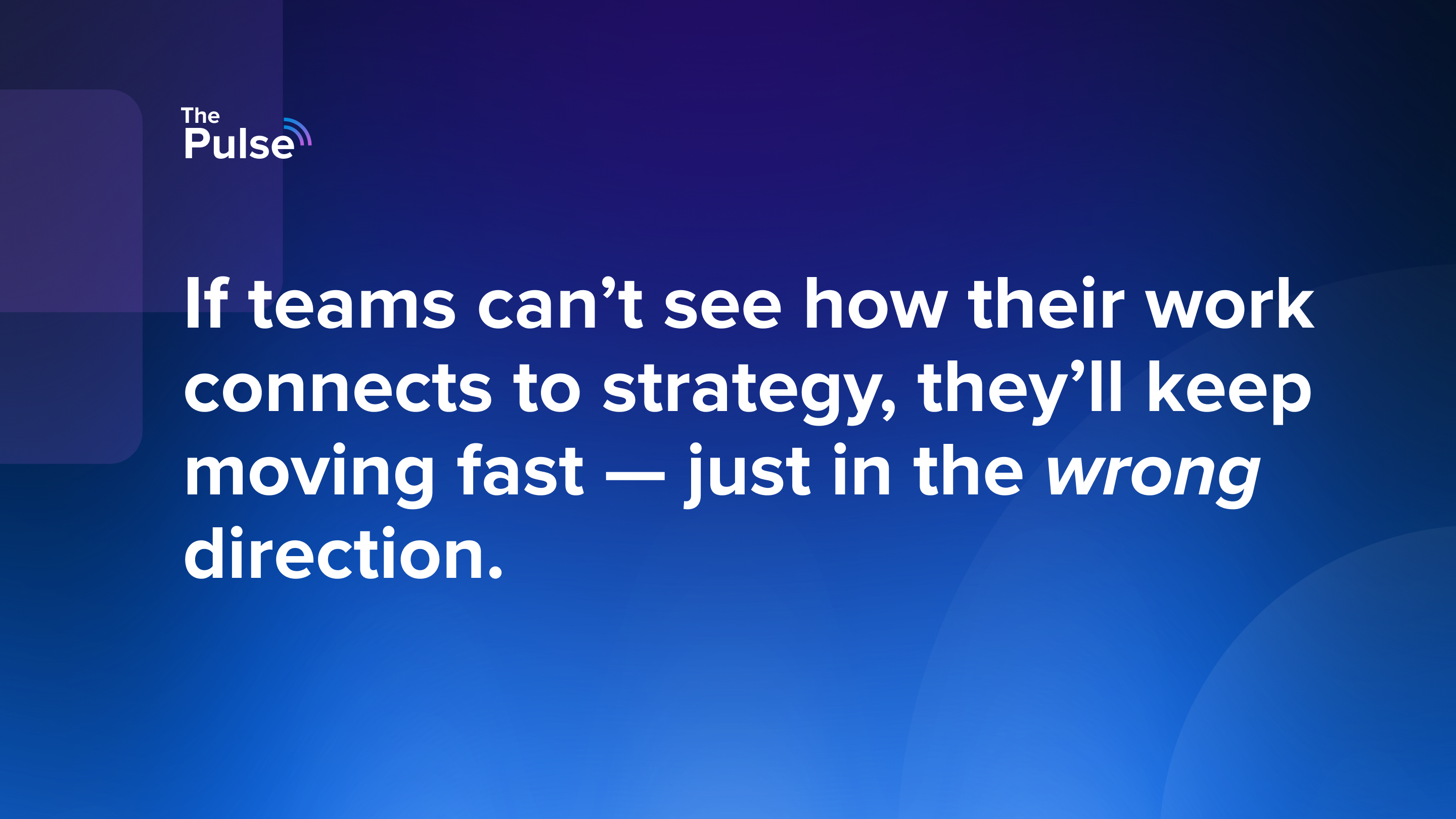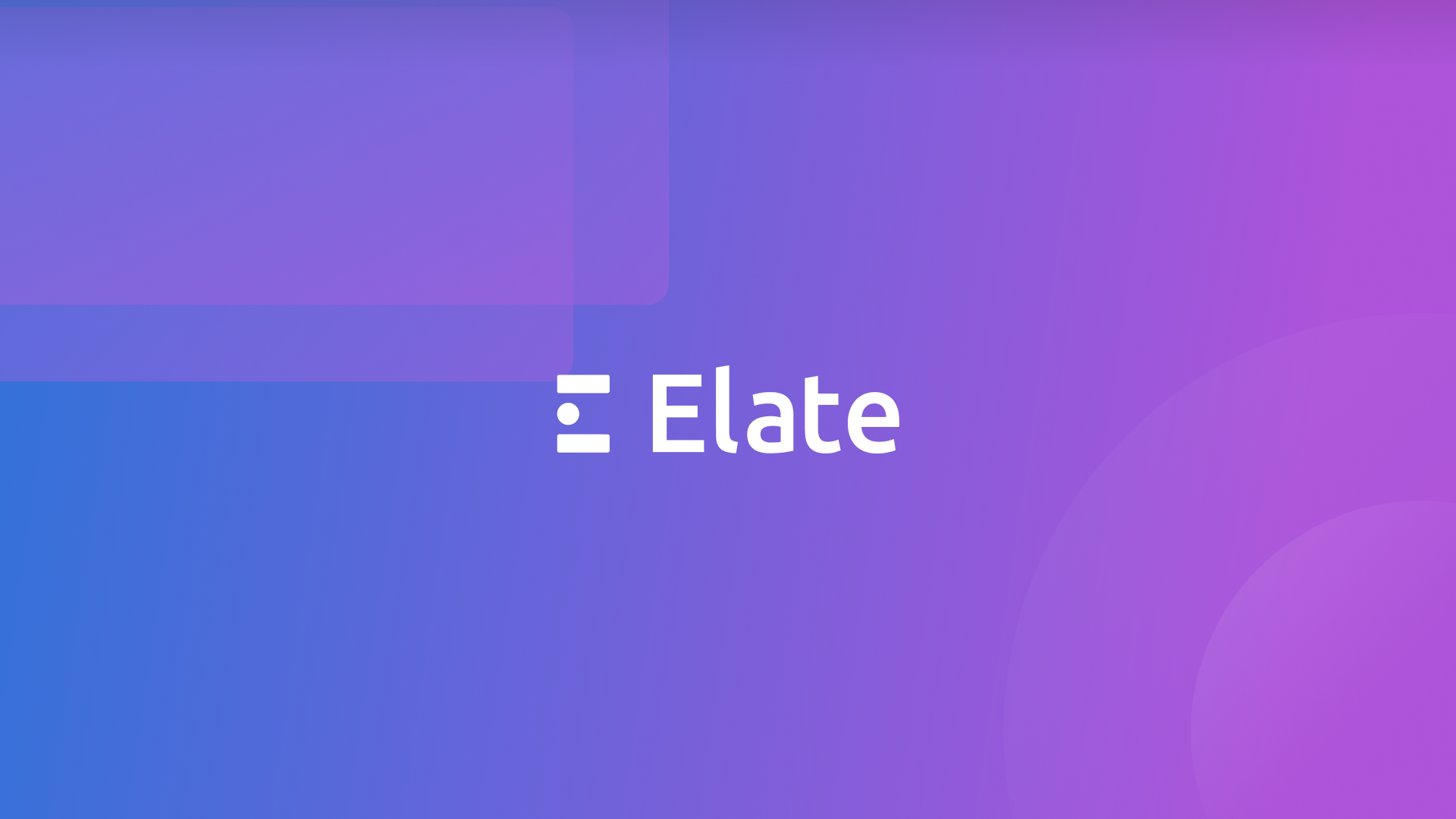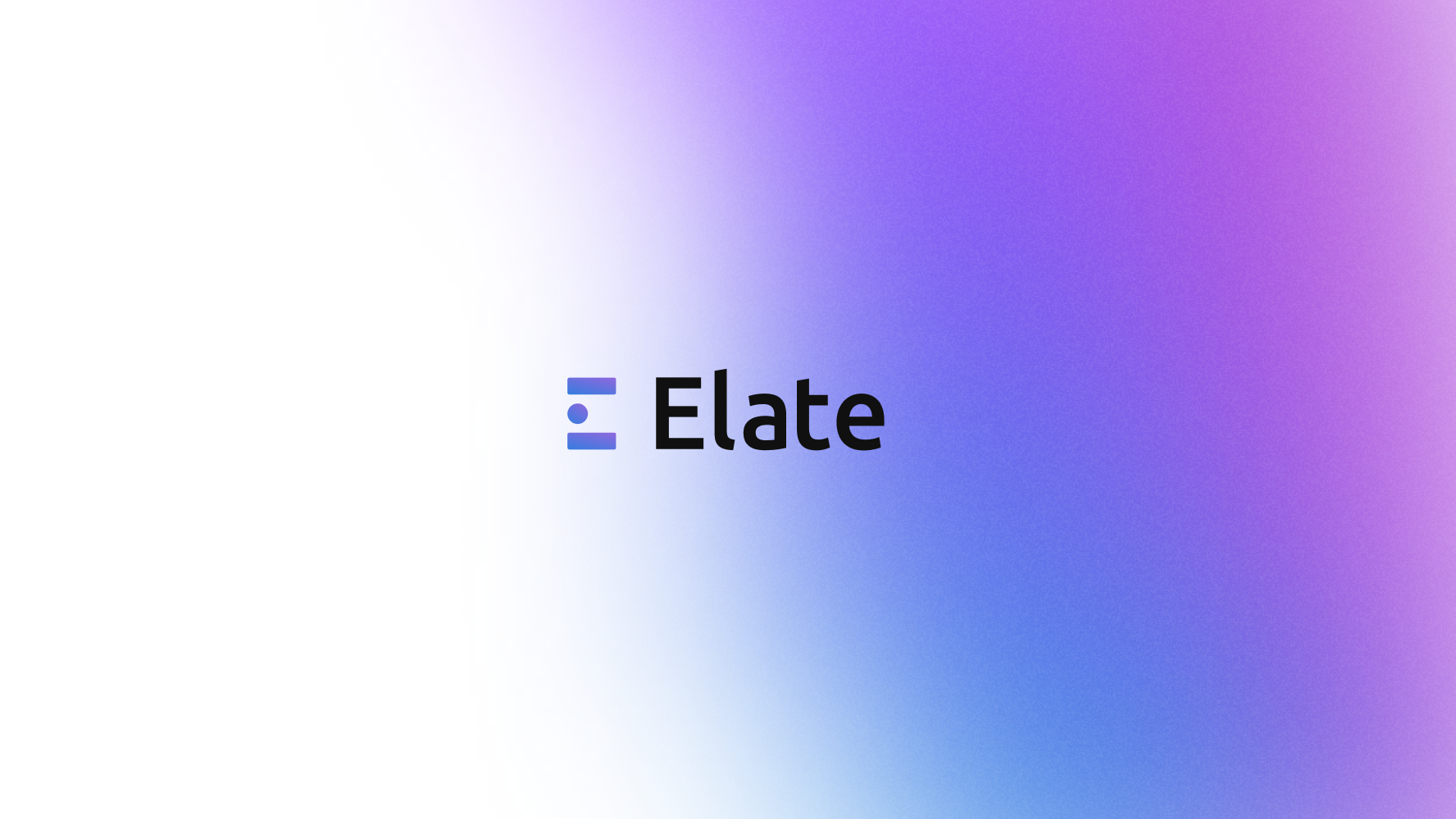
If you missed it, last Tuesday we officially announced the release of Strategy Advisor, Elate’s strategy-specific AI designed to help leaders turn vision into execution with more speed, clarity, and impact.
While there are a lot of incredible learnings and insights I want to share from the release and initial feedback, I want to take a bit of time to collect my thoughts.
So in the meantime, I wanted to get back to the essence of The Pulse: providing practical advice for Strategy and Operations Leaders.
Especially as we’re in the thick of planning season for many organizations, this topic is one that’s near and dear to my heart. So let’s get into it.
In this edition:
- ✅ The Cost of Managing Projects vs. Driving Decisions
- 🎬 The New Era of Strategy
- 🎥 AI Strategy Series recordings
- 🌐 A new look for goelate.com
The Cost of Managing Projects vs Driving Decisions
One of the most important questions any Strategy Leader must be able to answer is how they distinguish Project Management from Strategy Execution.
While it might sound like semantics, that’s part of the problem. For far too many Leaders, they can’t articulate the function of Project Management vs Strategy Execution.
Thus, it makes sense that employees struggle to differentiate the two.
In past editions of The Pulse, I’ve written about the differences between Managing Projects vs. Executing Strategy, as well as a two-part series on the Importance of Shifting from Transactional Tasks to Purposeful Work.
But I wanted to revisit this topic through the lens of AI, and why it’s more important now than ever to distinguish between Project Management and Strategy Execution if we want to elevate how our organizations drive decisions and deliver results.
Shifting Expectations
One reality that will come with the emergence of AI is the ability to act more quickly and decisively.
This won’t happen overnight, but we’re already seeing the signals.
Executives are being asked by Board Members how they are implementing AI to save time and increase efficiency. In turn, those same Executives are expecting their teams to research and test new AI tools that can unlock more of their time.
As I wrote about in the 50th edition of The Pulse, the trick will be in turning unrealized gains into realized results.
For Strategy teams, the time savings provided by AI is already evident.
The ability to autogenerate reports, leverage exec-ready summaries, and act on insights provided by strategy-specific AI has unlocked hours of work for Strategy Leaders. Hours that can now be spent making decisions, communicating with teams, or tracking down updates.
However, with these efficiency gains come new expectations.
There are three areas AI will unlock in your Strategy Execution process:
- Decision cycles should decrease.
- Cross-functional collaboration and alignment will increase.
- The results of decisions will be measured and the impact quantified.
For great Strategy Leaders, each of these unlocks should be music to our ears... that is, if we’ve built the right foundation for executing strategy rather than simply managing projects.
Doing More ≠ More Impact
There are few organizations that we work with at Elate that haven’t been burned by overcomplicated strategic planning frameworks with fancy acronyms.
Most folks are tired of hearing about OKRs, EOS, or whichever framework is being pushed this month.
But what’s happened for most organizations is a pendulum swing in the other direction.
In an attempt to simplify and create clarity, many organizations ended up creating an internal culture driven by to-do lists disguised as strategies, ultimately resulting in:
- Endless initiatives logged in spreadsheets.
- Countless tasks tracked in project management tools.
In either scenario, the outcome is the same: a task-driven culture focused on the quantity of work, not the impact.
Rather than a simple, intuitive framework supported by a culture of strategic thinking and results, these organizations are battling one built around activity and outputs.
And while AI might help employees do more work and automate workstreams, if those workstreams are defined by activity instead of impact, it only compounds the problem.
Last week, a Chief Strategy Officer put it perfectly:
“Just because our team is using AI to automate workstreams being tracked in our Project Management tool, it doesn’t mean those are the right workstreams. It’s like our team was driving the wrong way on a one-way street at 30 mph. Now with AI, they are still driving the wrong way, but they are going 90 mph instead of 30. We’re going faster, but on the wrong things.”
As a Type A personality, that quote hit me hard, because I’ve been there so many times. But with all the promise of AI, it’s more important now than ever that teams understand how their work connects to the larger organizational strategy.
If not, they will continue to feel mission drift. It’ll just happen even faster.
Creating a Culture of Strategy
Amid all of the change that AI is already bringing to our day-to-day work, it offers real time savings and unlocks new ways for Strategy Leaders to alter the trajectory of their organizations.
But it isn’t enough to think of those gains at just the Executive Level.
The real opportunity is to leverage AI to elevate the work of every employee.
Our responsibility as Strategy Leaders is to ensure we provide team members with clear direction and empower them to say ‘yes’ to what matters most. Which is why it is so important we can define the difference between Project Management and Strategy Execution.
Strategy Execution is the successful delivery of our operating plan through the collective efforts of our entire organization. It brings together our long-term vision with tactical execution in a way that conveys impact, priority, and clear definition of accountability.
Project Management is a part of that broader strategy. It is the way that our PMO team and project owners can effectively track the progress and milestones. What strategy execution adds is the connection… showing how those projects enable the successful attainment of company objectives measured by our organization’s outcomes.
Strategy Execution and Project Management complement each other. But they aren’t interchangeable.
If you’d like to learn more about how Elate helps bring these two practices together, I’d love to share more about how we make it a reality for organizations. It’s nuanced, sure, but that’s okay. Because the more we lean into the distinction, the more we can serve our teams and unlock true strategic impact.
🎬 The New Era of Strategy
Last week was a big one for our team. With the release of Strategy Advisor, we officially kicked off what we’re calling The New Era of Strategy.
The way companies plan and execute is changing fast. AI won’t replace Strategy Leaders, but it will redefine how we work, communicate, and make decisions.
If you haven’t seen it yet, take two minutes to watch the brand film that captures what this new era is all about.
🎥 AI Strategy Series Recordings
And if you want to go a layer deeper, we shared a few conversations last week that tell the story behind the launch and where we're headed next.
1) Unveiling of Elate’s AI-Powered Platform
In this session, Abby and I walked through:
- Why Elate was built in the first place
- How AI is unlocking The New Era of Strategy
- What makes Strategy Advisor different
- A high-level preview of Plan Analyzer, Risk Navigator, and Reporting Assistant
2) How AI is Reshaping Strategic Planning and Execution
In this session, Shannon, Abby, and I discussed how AI is moving from a productivity tool to a strategy enabler, shared best practices, and explored how Strategy Leaders are leveraging AI today.
3) A First Look at Strategy Advisor
In our final session, Ross demoed Strategy Advisor and shared how our new AI engine is helping Strategy Leaders move smarter and faster.
🌐 A New Look for goelate.com
We also launched a brand new goelate.com alongside the announcement.
It brings together everything we’ve been building toward — the story, the product, and the people behind it.
That's all for today, have a great rest of your week.
-Brooks


